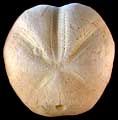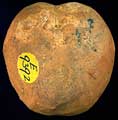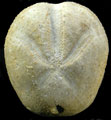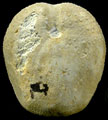The Echinoid Directory
Pliotoxaster Fourtau, 1907, p. 140
| Diagnostic Features |
|
|---|---|
| Distribution | Cretaceous (Aptian to Cenomanian), Europe, Middle East, North Africa, USA. |
| Name gender | masculine |
| Type | Pliotoxaster lyonsi Fourtau, 1907, p. 140 [=Toxaster dieneri de Loriol 1887, p. 54] by original designation. |
| Species Included |
|
| Classification and/or Status |
|
| Remarks | Differs from Toxaster in having the petals sunken and completely free of tubercles perradially. The apical disc also has genital plate 2 separating the two posterior genital plates in the type species at least, in contrast the disc of Toxaster where the two posterior genital plates abut. It differs from Mecaster primarily in having only the beginnings of a diffuse peripetalous fasciole. |







